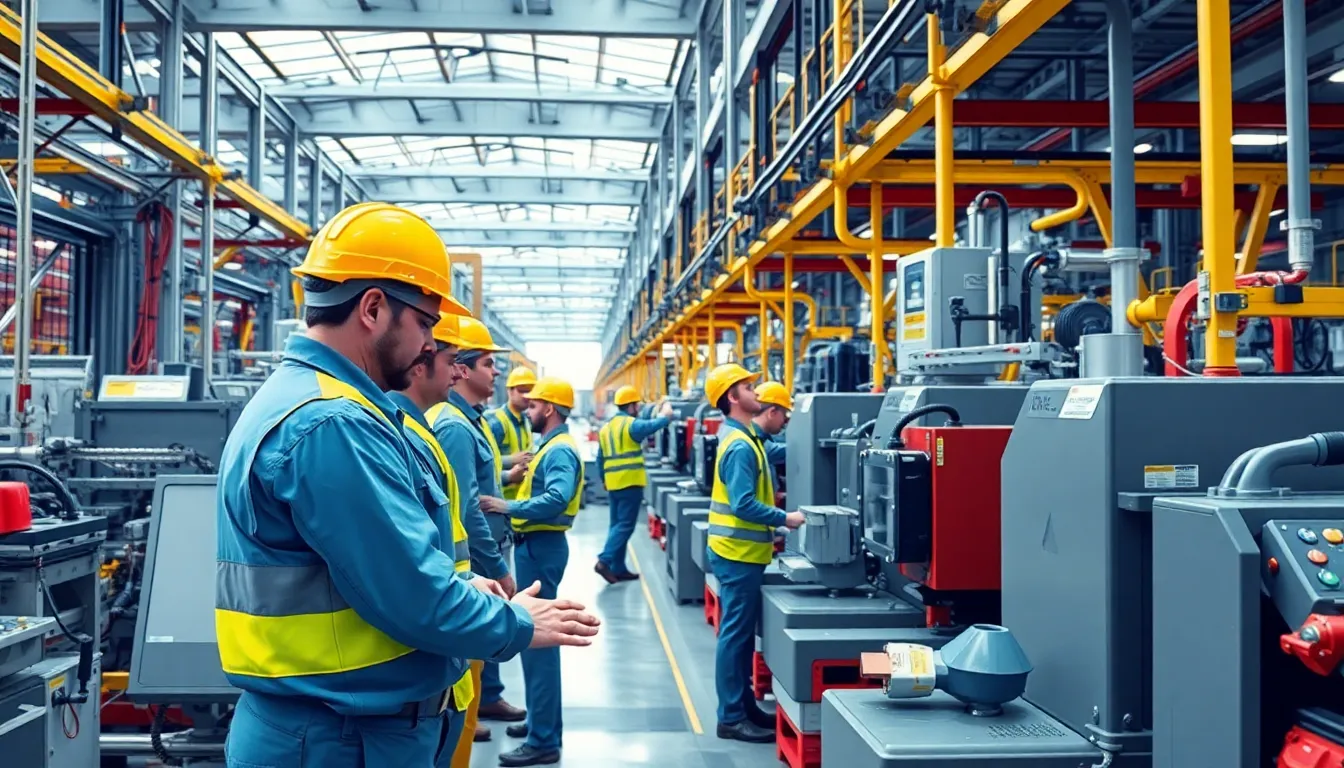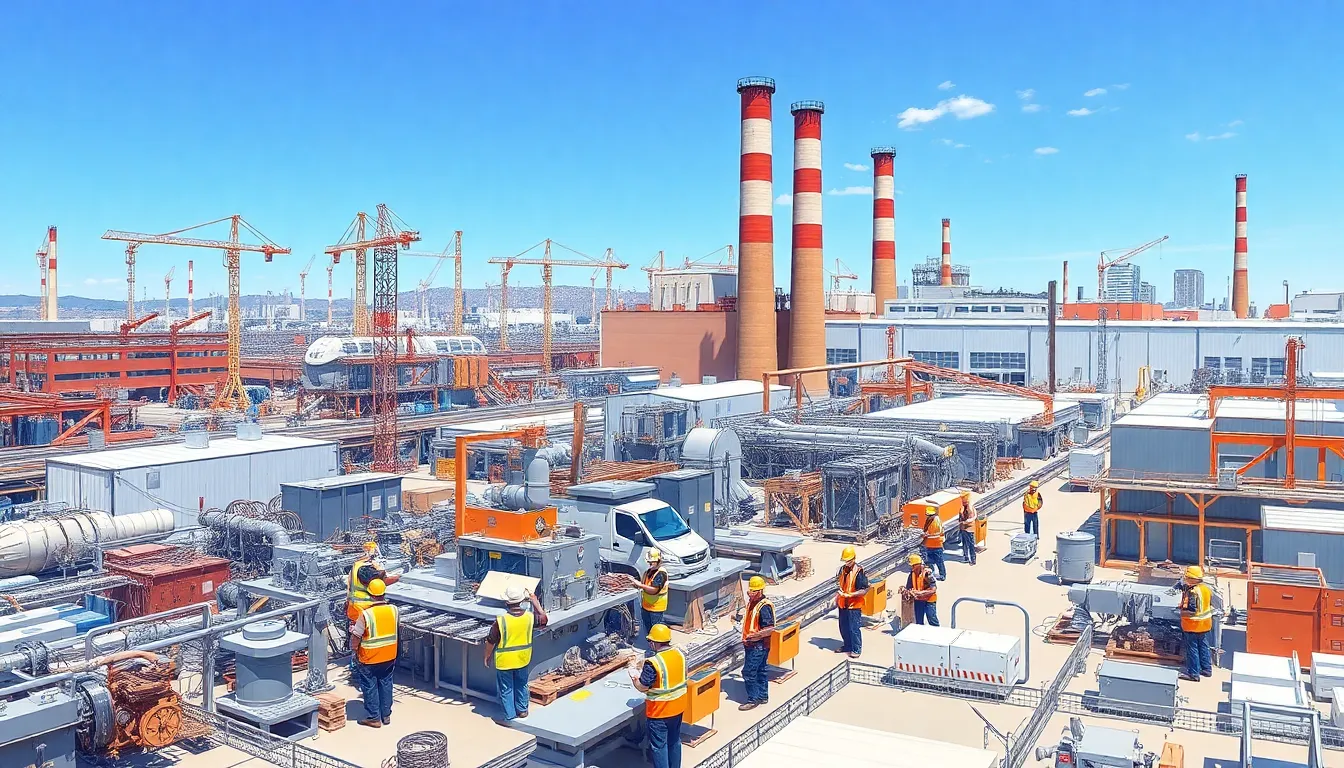Table of Contents
ToggleIn a world where industries are popping up faster than popcorn in a microwave, industrial growth has become the heartbeat of global economies. It’s not just about factories and machines; it’s about innovation, job creation, and a dash of healthy competition that keeps everyone on their toes.
Understanding Industrial Growth
Industrial growth reflects the expansion and evolution of various sectors within an economy. This concept revolves around innovations, technological advancements, and increased productivity.
Definition of Industrial Growth
Industrial growth represents the increase in the capacity and output of industries over time. It involves the development and implementation of new technologies, processes, and systems. Economic indicators like GDP growth, employment rates in industrial sectors, and output metrics typically measure it. Various factors contribute to industrial growth, including investment in infrastructure, workforce skill enhancement, and emerging technologies.
Importance of Industrial Growth
Industrial growth holds significant importance for economic stability and development. It creates job opportunities, which reduce unemployment rates and improve living standards. Growth in industries often leads to increased competition, resulting in better products and services for consumers. Furthermore, innovation drives efficiency, enabling industries to meet changing market demands. Positive effects extend to the overall economy as industrial growth promotes exports and strengthens trade balances.
Factors Influencing Industrial Growth

Industrial growth stems from various critical factors that shape the landscape of economies. Understanding these elements provides insight into how industries expand and thrive.
Economic Factors
Economic conditions significantly affect industrial growth. Economic stability creates a conducive environment for investment and expansion. High consumer demand for goods drives production increases. Inflation rates can also impact costs, influencing profit margins and investment decisions. Additionally, access to financing fosters growth as businesses can secure loans to fund operations. Regions experiencing economic upturns often see heightened industrial activity, as favorable conditions encourage company innovations and expansions.
Technological Advancements
Technological advancements play a crucial role in shaping industrial growth. Automation and advanced manufacturing processes boost efficiency and productivity. New technologies often reduce production costs, promoting competitiveness in global markets. Innovations in information technology enable data-driven decision-making, further enhancing operational efficiency. Companies investing in research and development continue to propel industries forward. As tech integration increases, industries adapt more quickly, resulting in sustainable growth and improved product offerings.
Government Policies
Government policies significantly influence industrial growth. Supportive regulations can create a favorable business climate, attracting both domestic and foreign investments. Tax incentives stimulate new ventures and encourage expansion in existing companies. Infrastructure development funded by government initiatives enhances transportation and logistics, benefiting industries. Trade policies also play a role, as they affect import/export dynamics. Consistent government support fosters a stable environment for businesses, enabling long-term growth opportunities.
Impacts of Industrial Growth
Industrial growth significantly influences various aspects of society. This section explores its economic, social, and environmental impacts.
Economic Impact
Economic growth stems from industrial expansion, evidenced by increased GDP and job creation. Businesses often experience heightened productivity due to technological advancements. These advancements reduce operational costs while enhancing product quality. Consumer demand surges, prompting industries to scale up production and innovate. Additionally, increased exports strengthen trade balances, benefiting national economies. Job creation fosters a more skilled workforce, leading to higher wage standards. Overall, industrial growth serves as a catalyst for sustained economic development, positively affecting local and global markets.
Social Impact
Societal changes frequently accompany industrial growth, enhancing community living standards. Employment opportunities increase, allowing individuals to contribute to household incomes. With more people working, social mobility becomes attainable, fostering a better quality of life. Education and training access improve, as industries require skilled workers to thrive. Infrastructure development often follows, providing better transportation and communication networks. Increased competition drives higher product quality and lower prices, benefiting consumers. These social transformations promote a sense of stability and progress within communities.
Environmental Impact
Environmental concerns arise alongside industrial growth, necessitating a balance between development and sustainability. Increased production leads to higher energy consumption and resource extraction. Pollution levels can rise, impacting air and water quality. Sustainable practices and green technologies become essential to mitigate these effects. Many industries now prioritize eco-friendly processes to reduce their carbon footprints. Governments frequently implement regulations to promote environmental responsibility among businesses. As a result, industries actively seek innovations that align growth with environmental conservation, paving the way for sustainable development.
Challenges in Industrial Growth
Industrial growth faces several challenges that can hinder its progress. Addressing these challenges is essential for sustaining development.
Resource Management
Resource management presents significant obstacles for industries. Efficient utilization of natural resources is vital for maintaining productivity levels. Many industries struggle with managing raw materials, energy sources, and water effectively. They often encounter supply chain disruptions which can lead to increased costs. Training programs for employees can enhance resource management skills. Companies adopting advanced technologies for monitoring and optimizing resources see improved outcomes. Balancing resource demands with production capabilities remains crucial for long-term success.
Sustainability Concerns
Sustainability concerns also pose challenges to industrial growth. An increasing focus on environmental responsibility influences industry practices. Many sectors face pressure to minimize their carbon footprints and waste. Companies that prioritize eco-friendly practices often navigate regulatory requirements more effectively. They invest in green technologies to reduce negative impacts on ecosystems. Public awareness pushes industry leaders to develop sustainable solutions. Incorporating renewable energy and promoting circular economy principles becomes essential for enhancing sustainability. While these efforts may require upfront investments, they yield long-term benefits for both businesses and the environment.
Future Trends in Industrial Growth
Future trends in industrial growth include significant advancements, reshaping various sectors. Technological innovations play a crucial role in this transformation, influencing processes and productivity.
Innovations in Technology
Robotics and automation revolutionize production lines, enhancing efficiency and safety. Advanced manufacturing techniques, such as 3D printing and additive manufacturing, allow for rapid prototyping and reduced material waste. Artificial intelligence streamlines supply chains, optimizing inventory management and forecasting demand. Industry 4.0 integrates the Internet of Things, enabling real-time data analysis and improved decision-making. This evolution not only boosts productivity but also fosters a more skilled workforce adept in new technologies, ultimately reshaping job roles within industries.
Globalization Effects
Globalization continues to influence industrial growth by expanding markets and creating new opportunities. Companies increasingly access international resources, driving down production costs. Trade agreements facilitate smoother transactions, allowing businesses to compete on a larger scale. Furthermore, global supply chains enhance collaboration and innovation, linking manufacturers to consumers worldwide. Current trends also emphasize the importance of localizing production, allowing businesses to better respond to regional demands while maintaining global reach. This dual approach aids in balancing efficiency with adaptability, essential for thriving in a competitive environment.
The dynamics of industrial growth are reshaping economies and societies alike. As industries evolve through technological advancements and innovation, they not only boost productivity but also create valuable job opportunities. However, balancing this growth with sustainable practices is crucial. Companies must prioritize eco-friendly initiatives to mitigate environmental impacts while still driving economic progress.
The future of industrial growth hinges on adaptability and a commitment to sustainability. By embracing new technologies and fostering a skilled workforce, industries can thrive in an increasingly competitive global landscape. The path forward lies in harnessing the power of growth responsibly, ensuring that both businesses and the environment can flourish together.








